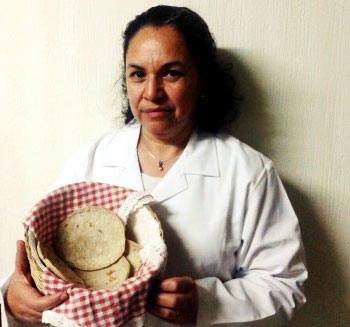CHAMPIONING THE NUTRITIONAL VALUE AND ANCESTRAL ORIGINS OF MAIZE
 International Women’s Day on March 8, offers an opportunity to recognize the achievements of women worldwide. This year, CIMMYT asked readers to submit stories about women they admire for their selfless dedication to either maize or or wheat. In the following story, Michele Monroy-Valle writes about her Maize Super Woman, Julieta Salazar, head of the comprehensive research unit of studies on indigenous foods of the region at Universidad de San Carlos de Guatemala.
International Women’s Day on March 8, offers an opportunity to recognize the achievements of women worldwide. This year, CIMMYT asked readers to submit stories about women they admire for their selfless dedication to either maize or or wheat. In the following story, Michele Monroy-Valle writes about her Maize Super Woman, Julieta Salazar, head of the comprehensive research unit of studies on indigenous foods of the region at Universidad de San Carlos de Guatemala.
Maize is the most consumed staple food in Guatemala.
As a researcher and professor of food science, Professor Julieta Salazar encourages students to learn how to exploit the nutritional benefits of this wonderful grain.
She teaches them how to prepare it through alkaline cooking, a process known as nixtamalization, so that it becomes an important source of protein, calcium and niacin, while improving balance and bioavailability of its amino acids.
Her efforts have been focused on preserving the traditional recipe of Guatemalan tortillas, and how this preparation has advantages over the consumption of white bread, due to its lower caloric density and glycemic index.
For Guatemala, Salazar’s efforts to educate future nutritionists and the general population on the value of combining corn and beans to improve protein consumption, based on the concept of “vegetable mix,” has a big impact. The nutritious dish is almost the only source of quality protein in poor households with low consumption of animal protein.
Salazar is a pioneer as a public speaker, championing the nutritional value of maize and the ancestral origins of its preparation into tortillas, tamales, atole and other traditional uses in food consumption.
Her area of study has also focused on how maize preparations are integrated into fast food “franchise” restaurants as side dishes or meals.
She has achieved all these accomplishments because she has been devoted for almost 20 years to the study of the chemical composition of maize in its many different forms, including tamales, atole and tortilla chips, among others.
Any views expressed in this article are those of the author and not of the International Maize and Wheat Improvement Center.
 Gender equality, youth and social inclusion
Gender equality, youth and social inclusion